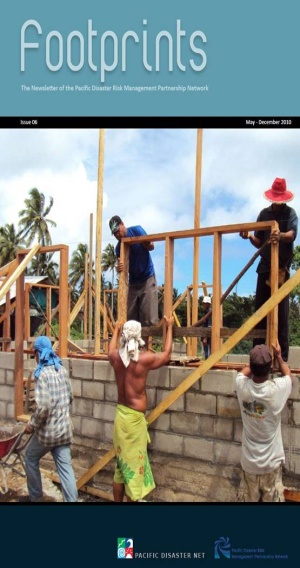 I bid all our readers ‘Seasons Greetings’ as we move closer to Christmas in 2010. This has been another busy year and the Pacific DRM Partnership Network continues to evolve and provide services and support to the Pacific island countries to address issues of vulnerability and risk.
I bid all our readers ‘Seasons Greetings’ as we move closer to Christmas in 2010. This has been another busy year and the Pacific DRM Partnership Network continues to evolve and provide services and support to the Pacific island countries to address issues of vulnerability and risk.
So much has been done by so many in 2010 and we hope to bring you some of the exciting stories in this issue of ‘Footprints’. As we wind down this year and move into 2011 there will be a number of changes that will be experienced. SOPAC as an independent regional intergovernmental organisation will from 1st January cease to function as a separate organisation and becomes the ‘Applied Geoscience and Technology Division of the Secretariat of the Pacific Community (SPC).
This transition helps to fulfil the decision of Pacific island Leaders in terms of the Regional Institutional Framework reforms that have been undergoing implementation over the course of the past 2 years. SOPAC now becomes part of a bigger organisation but our commitment to DRM capacity building and institutional strengthening in the Pacific region is just as strong as it ever was.
We look forward to the opportunities that 2011 will bring and to working closer with all our partners and with our colleagues in the Pacific island countries to help build the resilience of our region.
I hope your enjoy this issue.

Mosese Sikivou
Programmer Manager - Disaster Reduction Programme





